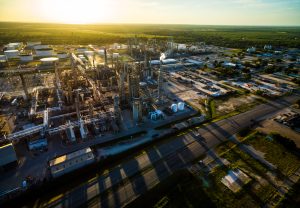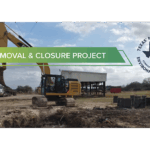
In the field of environmental site assessments, Phase 2 assessments play a crucial role in identifying potential contamination in specific locations. This article aims to provide a comprehensive overview of Phase 2 environmental site assessments in The Woodlands, a unique and ecologically diverse area. By understanding the key components of Phase 2 assessments, the importance of conducting them, and the subsequent interpretation and implications of the assessment results, stakeholders can make informed decisions to mitigate any environmental risks and ensure long-term environmental management.
Understanding Phase 2 Environmental Site Assessments
Phase 2 environmental site assessments are conducted to validate the presence or absence of contamination in an area of interest. These assessments involve extensive investigation and sampling activities to gather data about soil, groundwater, and other environmental media that may be affected by potential contaminants. By utilizing various methods and techniques, the assessment aims to determine the extent and severity of contamination, allowing for effective mitigation strategies.
Key Components of Phase 2 Assessments
A Phase 2 assessment typically involves several key components that constitute a comprehensive investigation. These components may include:
- Site Visit: Visiting the location to observe the physical characteristics and potential sources of contamination.
- Sampling: Collecting soil, groundwater, and other media samples for laboratory analysis.
- Data Analysis: Evaluating laboratory results to determine the presence and extent of contaminants.
During the site visit, environmental professionals meticulously examine the area of interest, taking note of any visible signs of contamination such as discolored soil or unusual odors. They also assess the surrounding land use and potential sources of contamination, such as nearby industrial facilities or underground storage tanks. This thorough investigation helps to establish a baseline understanding of the site’s environmental conditions.
Once the site visit is complete, the next step is sampling. Environmental professionals carefully collect samples from various locations within the area of interest, following strict protocols to ensure accuracy and reliability. These samples may include soil cores, groundwater samples, and even air samples in some cases. The collected samples are then sent to accredited laboratories for analysis.
The Importance of Phase 2 Assessments
Phase 2 assessments are crucial in determining if contamination exists at a site and understanding its potential risks to human health and the environment. By identifying and quantifying contamination, stakeholders can develop appropriate mitigation strategies, evaluate potential liability, and ensure compliance with environmental regulations. Furthermore, Phase 2 assessments provide valuable data for long-term environmental management and remediation efforts.
Understanding the extent and severity of contamination is essential for effective decision-making and risk management. It allows stakeholders to prioritize remediation efforts, allocate resources efficiently, and protect human health and the environment. Additionally, Phase 2 assessments play a vital role in property transactions, as potential buyers and lenders often require this assessment to assess potential environmental liabilities and make informed decisions.
The Woodlands: A Unique Environment
The Woodlands, located in [specify location], boasts a unique and diverse ecosystem. Its rich biodiversity and delicate balance between urban development and preservation make it an area of utmost importance for environmental stewardship. However, the rapid growth and increasing human activities in the region have also presented significant environmental challenges that need to be addressed.
Overview of The Woodlands’ Ecosystem
The Woodlands is home to a wide array of habitats, including forests, wetlands, and water bodies. This diverse ecosystem supports numerous plant and animal species, contributing to the region’s ecological value. Preserving and protecting this delicate balance is paramount in ensuring the long-term sustainability of The Woodlands.
The forests in The Woodlands are not only a source of natural beauty but also play a crucial role in carbon sequestration, helping to mitigate the effects of climate change. The wetlands act as natural filters, purifying water and providing essential habitat for a variety of species, including migratory birds and amphibians.
Environmental Challenges in The Woodlands
The rapid urbanization and industrial activities in The Woodlands have resulted in various environmental challenges, such as soil and water contamination, habitat degradation, and air pollution. These challenges necessitate the implementation of comprehensive environmental site assessments, including Phase 2 assessments, to identify and mitigate potential risks.
Efforts to address these challenges include the development of sustainable land use practices, such as green infrastructure and stormwater management systems, to reduce the impact of urban development on the natural environment. Additionally, community engagement and education programs are essential in raising awareness about the importance of environmental conservation and fostering a sense of stewardship among residents and businesses in The Woodlands.
Conducting Phase 2 Assessments in The Woodlands
When conducting Phase 2 assessments in The Woodlands, thorough preparations must be made to ensure accurate and reliable results. These preparations typically involve:
- Gathering Historical Information: Collecting relevant historical data regarding land use, previous contamination incidents, and nearby industrial activities.
- Site Characterization: Conducting a site visit to assess current conditions, identify potential contaminant sources, and establish a sampling plan.
Moreover, it is crucial to engage with local stakeholders and community members to gain insights into any environmental concerns or issues that may not be evident through standard assessments. Their knowledge of the area can provide valuable context and help in identifying potential risks that might have been overlooked.
Assessment Process and Procedures
After site characterization, the assessment process commences. This involves collecting representative samples from various media, such as soil and groundwater, based on a predetermined sampling plan. Samples are carefully analyzed in accredited laboratories using appropriate methods and techniques. The findings are then compared against regulatory guidelines and established remedial goals to determine the severity of contamination.
Furthermore, conducting interviews with local residents or workers who have historical knowledge of the site can offer additional insights into past activities that may have contributed to contamination. These oral histories can supplement the data collected through traditional assessment methods and provide a more comprehensive understanding of the site’s environmental history.
Interpreting Assessment Results
Interpreting the results of Phase 2 assessments requires specialized knowledge and expertise. This analysis involves an in-depth review of the data collected during the assessment and its implications for human health and the environment.
Analysis of Findings
The analysis of assessment findings involves interpreting laboratory results, identifying potential sources of contamination, and assessing the extent and severity of contamination. This analysis provides a clear understanding of the risks posed by the contaminants and guides decision-making processes regarding potential mitigation strategies.
Implications of Assessment Results
The implications of Phase 2 assessment results are far-reaching. They provide valuable information on the potential human health risks and environmental impacts associated with the contamination. Additionally, the results may influence future land use decisions, property transactions, and the implementation of remediation strategies.
Mitigation and Remediation Strategies
Based on the findings of Phase 2 assessments, stakeholders can develop and implement effective mitigation and remediation strategies to address any identified contamination. These strategies involve:
- Planning for Environmental Remediation: Developing a detailed plan for removing, neutralizing, or containing contaminants to minimize their impact on human health and the environment.
- Long-Term Environmental Management Strategies: Creating a framework for ongoing monitoring, maintenance, and management of the remediated site to prevent future contamination and ensure long-term sustainability.
By prioritizing the protection of the unique environment in The Woodlands and conducting comprehensive Phase 2 environmental site assessments, stakeholders can make informed decisions to safeguard human health, mitigate environmental risks, and foster sustainable development for future generations.
As you consider the importance of Phase 2 Environmental Site Assessments for The Woodlands, remember that the right expertise can make all the difference. ESE Partners is dedicated to guiding you through the complexities of environmental challenges with innovative and sustainable solutions. Our team of skilled environmental engineers and scientists is ready to support your needs in assessment, remediation, and compliance. Take the next step in protecting the environment and your business interests in The Woodlands. Request A Proposal from ESE Partners today and move forward responsibly with a partner you can trust.








